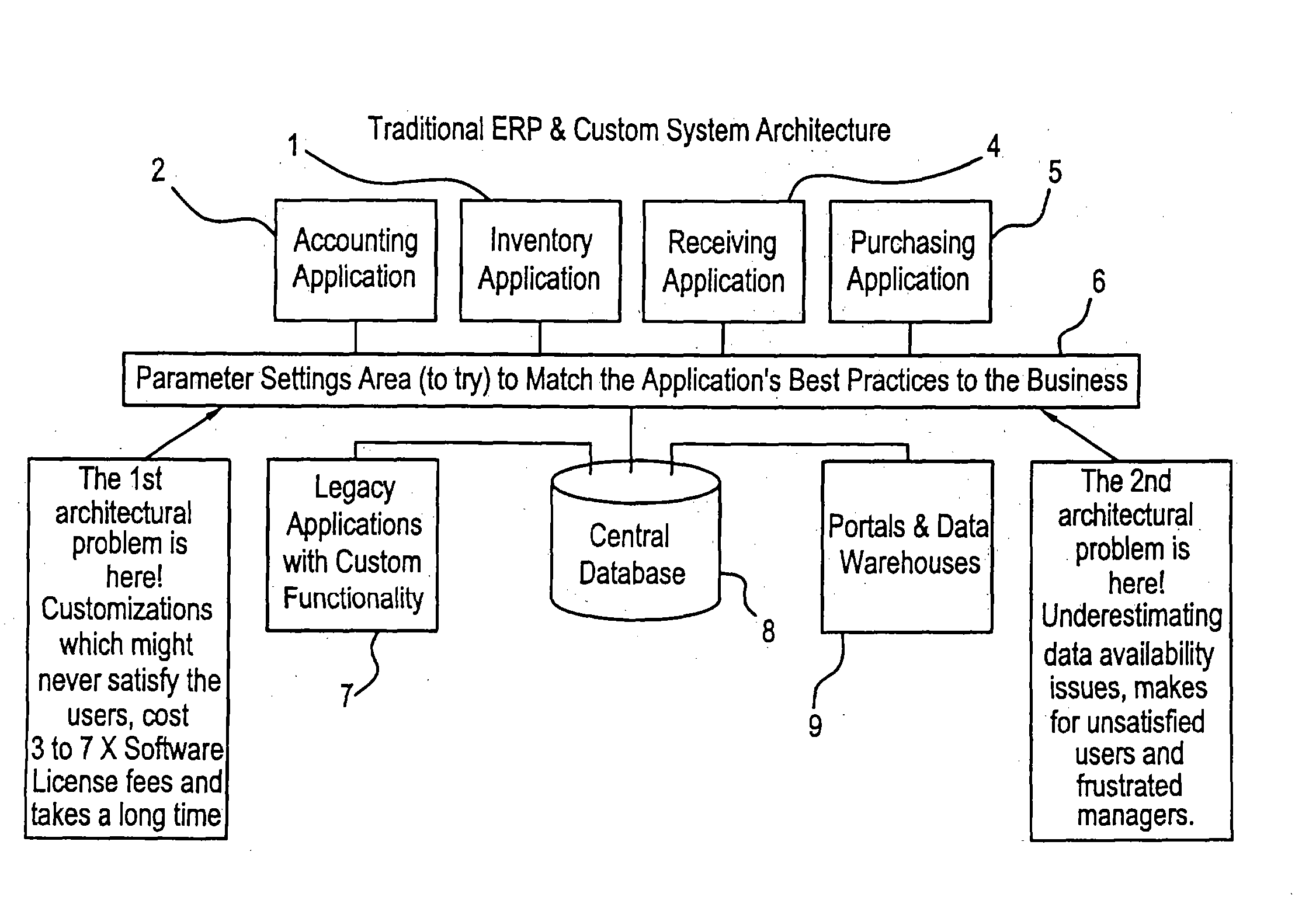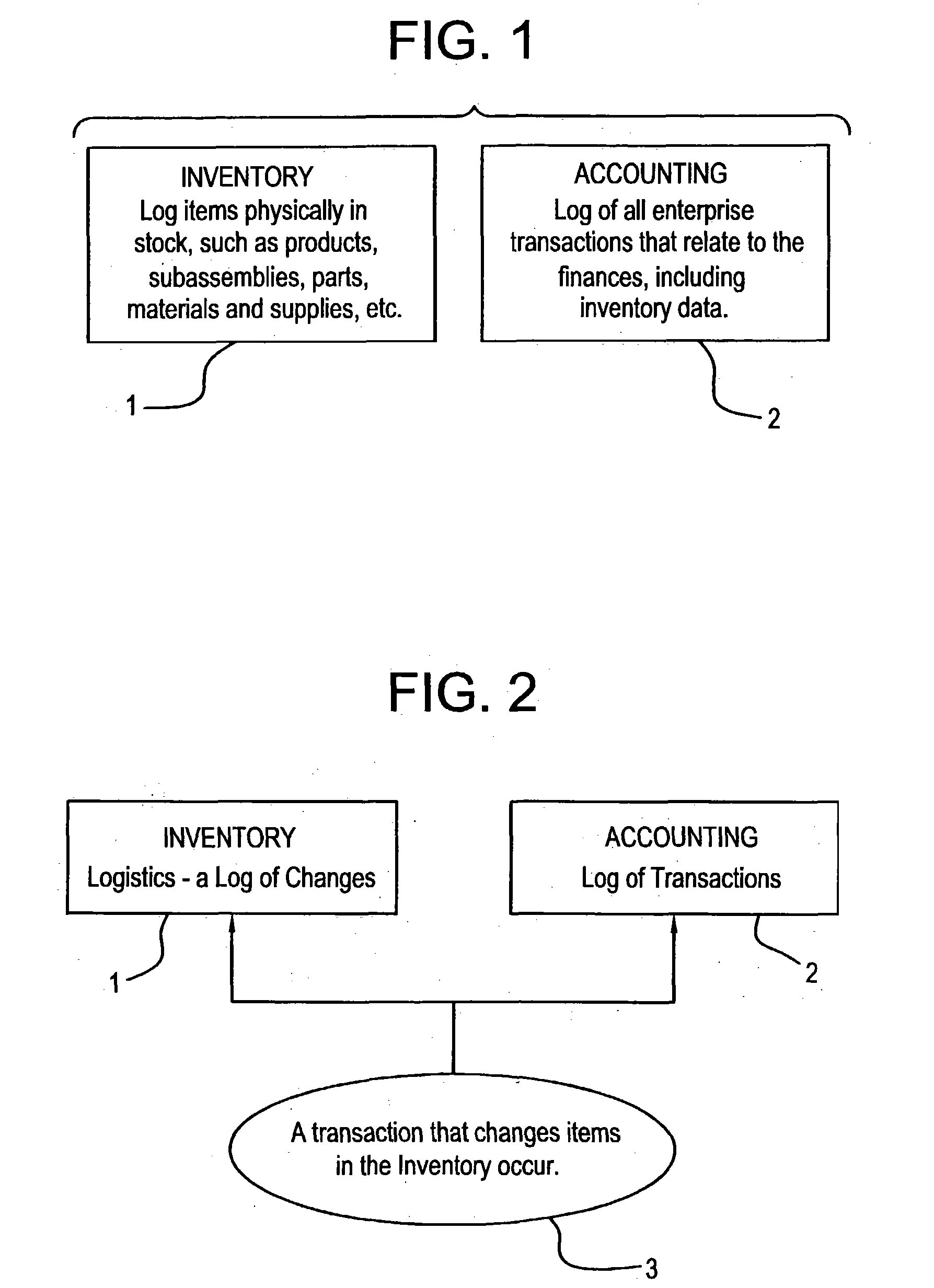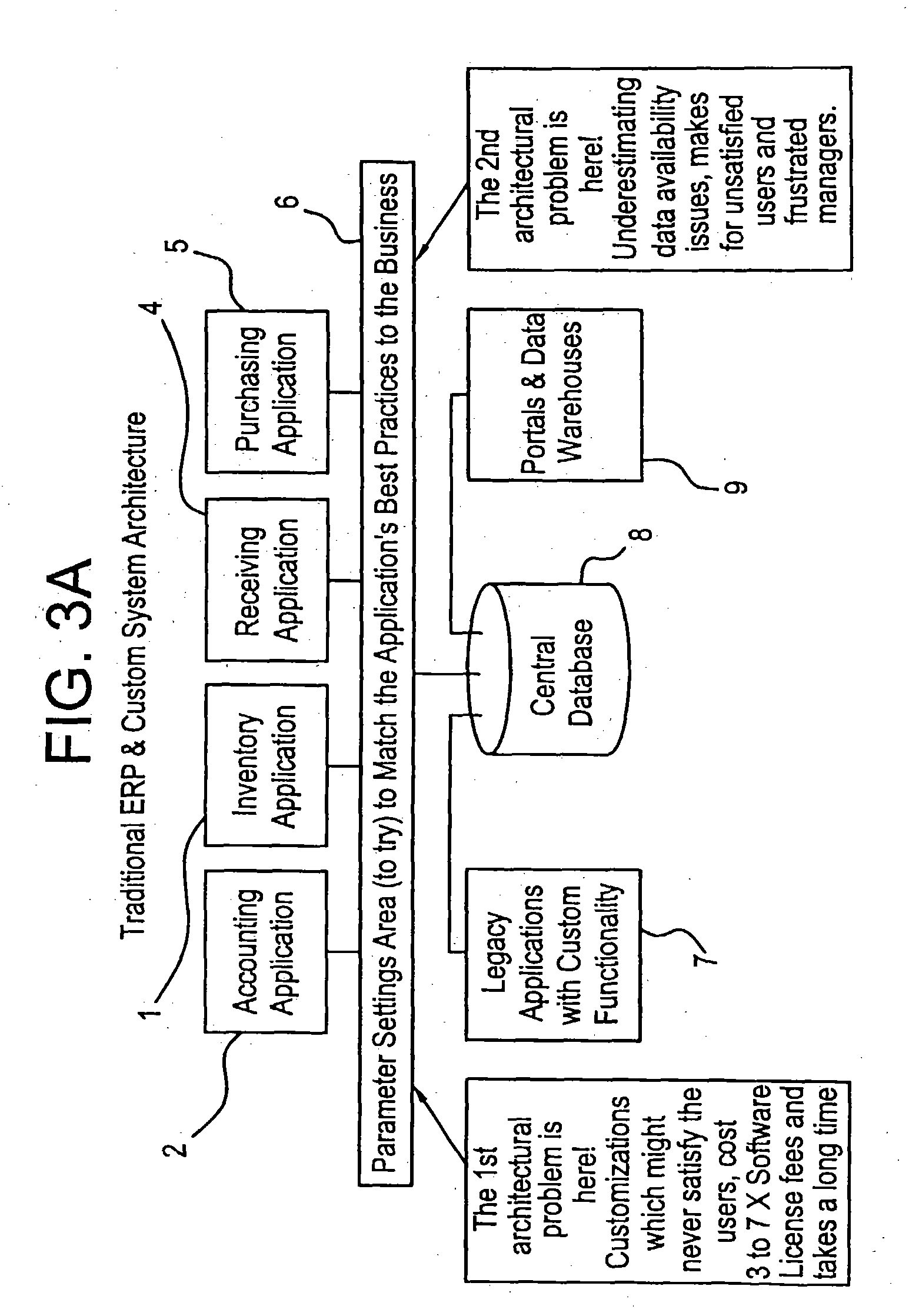Information system comprised of synchronized software application moduless with individual databases for implementing and changing business requirements to be automated
- Summary
- Abstract
- Description
- Claims
- Application Information
AI Technical Summary
Benefits of technology
Problems solved by technology
Method used
Image
Examples
Embodiment Construction
[0043] The present embodiment of the SAIDware invention, herein, called the “inow™ Modular Information System”, is unlike any other IS application architecture, technology or invention. Its unique feature is that the system is made from simplified software application modules, each with its own, individual database. The inow Modules can be used individually, or grouped in a suite of modules that work together. The simplified modules use libraries of core functionality pre-developed for similar requirements, and can be easily reprogrammed to implement the precise business requirements and data input screens for each customer across their departments, business units, and the enterprise. An important feature of this technology is a unique network-based synchronization and communication layer of the architecture, known as the Harmonizer™, that is employed to interface multiple i now™ Modules that are currently or soon-to-be designed, connecting one or more of them to each other and to a...
PUM
 Login to View More
Login to View More Abstract
Description
Claims
Application Information
 Login to View More
Login to View More - R&D
- Intellectual Property
- Life Sciences
- Materials
- Tech Scout
- Unparalleled Data Quality
- Higher Quality Content
- 60% Fewer Hallucinations
Browse by: Latest US Patents, China's latest patents, Technical Efficacy Thesaurus, Application Domain, Technology Topic, Popular Technical Reports.
© 2025 PatSnap. All rights reserved.Legal|Privacy policy|Modern Slavery Act Transparency Statement|Sitemap|About US| Contact US: help@patsnap.com



